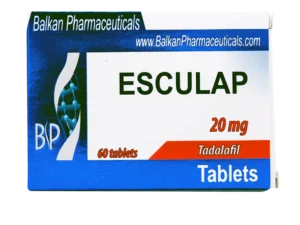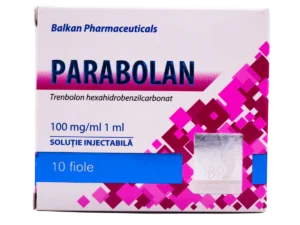Human Chorionic Gonadotropin (HCG) is a hormone that is produced by the placenta during pregnancy and then excreted unchanged in the urine, where it is extracted and purified to produce preparations. Chorionic gonadotropin has the same biological effects as luteinizing hormone (gonadotropic hormone or gonadotropin), which is produced in the pituitary gland. It is readily available in pharmacies without a prescription.
Recent studies have shown the complete ineffectiveness of this drug when used orally as part of dietary supplements. As of December 6, 2011, HCG dietary supplements and drugs are prohibited in the U.S:
Effects of gonadotropin
- Chorionic gonadotropin
- Stimulates the synthesis of sex hormones in the testicles, so it has the same range of effects as testosterone.
- Stimulates spermatogenesis.
- Enhances the development of reproductive organs and secondary sexual characteristics.
- In women it stimulates the production of progesterone by the corpus luteum, provokes ovulation, supports the development of the placenta.
Physiology of gonadotropin
In the body, regulation of gonadotropin levels occurs through a feedback mechanism in the hypothalamic-pituitary-testicular axis:
- Gonadoliberin is produced in the hypothalamus and stimulates the release of gonadotropic hormones.
- Gonadotropins are produced in the pituitary gland and normally stimulate the testicles, a lack of them causes testicular atrophy.
- Testosterone and anabolic steroids inhibit the production of gonadoliberin and gonadotropins, resulting in testicular atrophy.
Thus, in bodybuilding, with prolonged use of anabolic steroids, an additional gonadotropic hormone (chorionic gonadotropin) should be administered to prevent testicular atrophy.
HCG use in bodybuilding
In bodybuilding, HCG is probably the only valuable property of gonadotropin: it increases the secretion of sex hormones (testosterone) by the testicles. As a consequence, gonadotropin is used as a means to prevent testicular atrophy and as a component of PCT.
Using HCG for anabolic purposes is not justified and is dangerous to your health. Chorionic gonadotropin is less effective than anabolic steroids, so in order to get a good effect, it is necessary to use it in high doses (more than 4000 IU per week), which may cause irreversible damage to the physiological hypothalamic-pituitary-gonadal axis. Due to this fact, many articles speak negatively about HCG, forgetting its true purpose.
Chorionic gonadotropin use on a course and PCT
In bodybuilding, the use of chorionic gonadotropin is justified and even necessary during a course of anabolic steroids to prevent testicular atrophy. In this case, its use is safe because doses of the drug are much lower, besides, chorionic gonadotropin allows eliminating some side effects of anabolic steroids and preserving the gained muscle mass. HCG is of particular importance if the steroid cycle is longer than 6 weeks or if high doses are used. In this situation, chorionic gonadotropin does not disrupt the hypothalamic-pituitary-testicular axis, and most importantly, it preserves testicular function.
Chorionic gonadotropin is used less frequently as part of post-course therapy. Many believe that it should be administered before SCT because hCG can interfere with recovery during post-course therapy.
Gonadotropin for weight loss
A relatively recent study by British endocrinologist scientist A.T.W. Simeons, which states that chorionic gonadotropin can be used in weight loss to maintain muscle mass. The scientist believes that gonadotropin programs the hypothalamus to consume fat reserves while keeping muscle protected from catabolism. Simeons recommends using small (and therefore safe) HCG doses of 125 ME daily on a low-calorie diet of less than 1500 kcal per day. This diet is practiced in many specialized weight loss centers. It should be noted that during such a course it is necessary to consume a sufficient amount of protein and vitamins.
Doses and regimen of chorionic gonadotropin
Currently, the pharmaceutical industry produces a large number of HCG preparations. After intramuscular injection, the drug is well absorbed. The elimination half-life is a few hours, but the effect of a single injection lasts for 5 to 6 days.
Injectable chorionic gonadotropin is a dry substance enclosed in an ampoule (vial). A vial with HCG must be accompanied by an ampoule with a liquid to dissolve the drug. This is usually a sodium chloride solution. The powder dissolves well in the solution. The resulting mixture should be injected intramuscularly or subcutaneously. If you have not used all the liquid, the remainder should be placed in the refrigerator. Dry hCG must be stored in a dark place at a temperature no higher than +25 degrees Celsius.
Michael Scally MD and Eric Potratz protocols:
- If the course does not exceed 5-6 weeks, 1 low-dose drug is used, there is no need for gonadotropin. If the course is longer than 6 weeks (8-12 weeks), overdose, use 2 or more drugs: at least the last 3-5 weeks of the course perform 2 injections of gonadotropin per week of 250-500 IU to prevent testicular atrophy. Injection is stopped after almost complete elimination of the anabolic drug, then post-course therapy begins. On multi-month courses, gonadotropin is administered continuously, 3-5 weeks every 1-2 weeks (a break of at least 1-2 weeks should be taken to prevent desensitization). According to recent scientific evidence, this regimen is recognized as optimal because it preserves testicular function and promotes the fullest possible recovery after the course.
- If hCG has not been used for a long or “heavy” course, it should be included as part of post-course therapy, but then it should only be used at the beginning of the SCT. The most frequently used blust-protocol by William Llewellyns[8] (Program for Wellness Restoration), supported by clinical trials[9], according to which hCG is recommended to be used as part of post-course therapy, 2000 IU, every other day during 20 days for restart of hypothalamic-pituitary-ovarian arc; this scheme is not highly recommended in the absence of complications.
The only reliable indicator of the drug’s performance is the corresponding B-HCG reading, for which an appropriate blood test is done.
- For weight loss and anabolic effects, it is not recommended.
Testicular Size.
The administration of anabolic drugs leads to the suppression of luteinizing hormone, which maintains (stimulates) normal testicular function. After a 12-16 week cycle of AAS, Leydig cell volume is reduced by 90% and intrinsic testosterone secretion by 98%. Leydig cells account for only about 5% of testicular mass.
Palpatory analysis of testicular size is not a reliable method of evaluation because volume can change very little (as little as 5%) with almost total suppression of function.
Side effects.
Taking HCG can have the same side effects as taking testosterone. Use of gonadotropin in high doses or for long periods of time leads to suppression of gonadotropin-releasing hormone secretion, causing impaired function of the physiological hypothalamic-pituitary-ovarian axis. Large doses (2000-5000 IU) are not recommended for longer than 20 days, although according to Michael Scally, M.D., and a number of studies reported, testicular desensitization does not occur if the dosage does not exceed 500 IU or hCG is given less than 3 times a week. This protocol can be considered safe even for 1-2 months.
The information that gonadotropin can lead to pregnancy symptoms in men is completely absurd and untrue.







